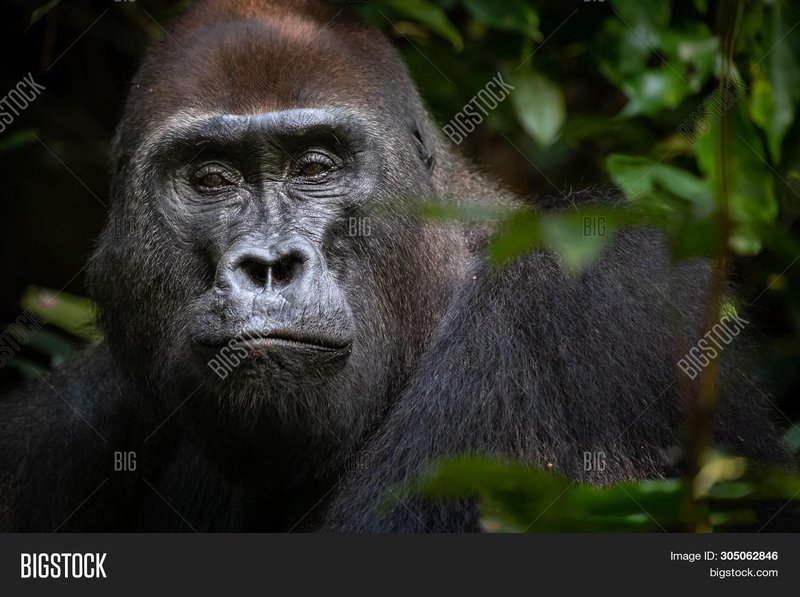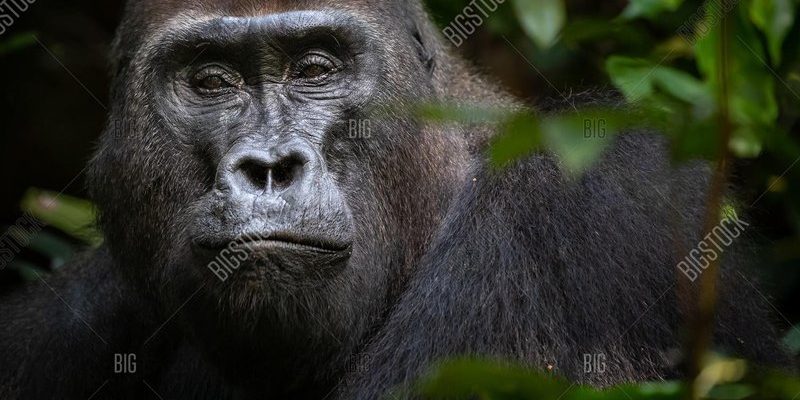
When you think of the mighty gorilla, you might picture a massive, powerful creature swinging through the treetops of the rainforest. Among the various species of gorillas, the Western Gorilla stands out, showcasing a mix of strength, intelligence, and family bonds that can warm even the coldest of hearts. These magnificent animals play a crucial role in their ecosystem, yet their existence is threatened by habitat loss and poaching. Understanding the Western Gorilla isn’t just fascinating—it’s essential for conservation efforts and our understanding of wildlife.
So, what exactly is a Western Gorilla? In simple terms, it’s a large primate native to the forests of Central Africa. Unlike their Eastern Gorilla cousins, Western Gorillas are known for their unique characteristics and behaviors, making them a special focus for researchers and conservationists alike. You might picture them lounging, munching on leaves, or playing with their young, but there’s so much more to their life. Let’s dive in and explore their world!
Physical Characteristics
The Western Gorilla is one of the largest primates on the planet. Adult males can weigh between 350 to 485 pounds, while females are generally smaller, weighing around 150 to 250 pounds. They have powerful arms and a robust build, with broad chests that give them an imposing presence. Their thick fur is usually black or brownish and serves as protection against the elements in their rainforest habitat.
One striking feature is the gorilla’s facial structure. They have expressive faces with large, deep-set eyes that convey a range of emotions from curiosity to affection. The nose is wide and flat, contributing to their unique look. Male gorillas develop a silver back, a patch of gray hair that signifies maturity and dominance in the group. This silver back can make the male appear even larger—a vital trait when establishing social hierarchy among their peers.
Here’s something interesting: The Western Gorilla has long arms that help with climbing and brachiating. Their feet are somewhat flat, adapted like human feet for better mobility on the ground. This combination of strength and agility allows them to thrive in their arboreal environments. Overall, their physical traits are not just for show; they play a critical role in their survival and social interactions.
Habitat and Distribution
Western Gorillas are found primarily in the rainforests of Central Africa, specifically in countries like Cameroon, Gabon, and the Republic of Congo. These lush, tropical environments provide a rich source of food and shelter. They thrive in dense forests, often choosing areas with plenty of vegetation so they can forage for leaves, fruits, and stems.
Their habitat is incredibly diverse. Some gorillas prefer lowland forests, while others are adapted to swampy areas. This adaptability is crucial, considering the rapid changes occurring in their environment due to deforestation and human encroachment. The Western Gorilla has faced significant habitat loss, leading to isolated populations that struggle to find mates and maintain genetic diversity.
Ultimately, the rainforest plays a pivotal role in their lives—not just as a habitat, but as a source of food and social structure. You might say that the forest is their home, sanctuary, and playground all rolled into one. Protecting their habitat is key to ensuring their survival, which is why conservation efforts are so vital.
Diet and Feeding Habits
The diet of the Western Gorilla is primarily vegetarian, consisting mainly of leaves, stems, fruits, and flowers. On average, an adult gorilla can consume up to 40 pounds of food each day! This hefty appetite is necessary to support their large bodies and active lifestyle. Interestingly, they also practice selective feeding, meaning they prefer certain plants over others, showcasing a level of dietary sophistication.
These primates are known as folivores, animals that primarily feed on leaves. This allows them to take advantage of abundant foliage in their environment while avoiding competition for fruits that many other animals seek. They have strong molar teeth designed for grinding plant material, enabling them to extract the nutrients they need.
You might be surprised to learn that gorillas also exhibit foraging behaviors that are quite social. They often feed together in groups, sharing food and grooming one another. This not only strengthens their bonds but also teaches younger gorillas about their diet and social dynamics, ensuring that knowledge is passed down through generations.
Social Structure and Behavior
The Western Gorilla lives in family groups called troops, typically led by a dominant male known as the silverback. This silverback’s role is critical, as he protects the group, makes decisions about where to forage, and mates with the females. A troop usually consists of several females and their offspring, creating a tightly-knit community that relies on each other for support.
Gorillas are highly social animals and often engage in playful behaviors. Young gorillas love to swing from branches, wrestle, and explore their surroundings. This playtime is essential for developing skills they’ll need as adults. Interactions within the group often involve grooming, a behavior that helps to strengthen social bonds and reduce tension among group members.
Communication among gorillas is fascinating too. They express themselves through a variety of vocalizations, gestures, and facial expressions. Grunts, hoots, and chest-beating are just a few of the sounds they use to convey feelings and maintain social order. Pay attention to their body language; a raised brow or a playful shove can say a lot about their mood and intentions!
Threats and Conservation Status
The Western Gorilla is classified as critically endangered. Their populations have dramatically decreased due to various threats, including habitat destruction, poaching, and disease. The illegal wildlife trade poses a severe threat, as some gorillas are captured and sold as pets or for entertainment. Additionally, diseases like the Ebola virus have devastated certain populations, making recovery efforts even more challenging.
Habitat loss is perhaps the most pressing issue. As humans expand agriculture and logging activities within their range, gorillas lose their homes. This not only limits their access to food but also fragments their populations, making it harder for them to mate and maintain genetic diversity. A fragmented habitat means that gorillas may not be able to travel freely between areas, isolating them from potential mates.
Conservationists are actively working to protect these magnificent creatures and their habitats. Efforts include anti-poaching patrols, habitat restoration projects, and community education programs. The involvement of local communities is crucial, as their support can lead to more effective conservation strategies. By raising awareness and fostering a sense of responsibility, we can help ensure a brighter future for the Western Gorilla.
Interesting Facts About Western Gorillas
| Scientific Name: | Gorilla gorilla |
| Size: | Up to 5.5 feet tall |
| Weight: | 350 to 485 pounds (males), 150 to 250 pounds (females) |
| Diet: | Herbivore (leaves, fruit, stems) |
| Life Span: | 35 to 40 years in the wild |
| Population: | Estimated 100,000 remaining |
| Habitat: | Tropical and subtropical forests |
Understanding the Western Gorilla gives us insight into the beauty and complexity of nature. They are more than just large primates; they are social beings with rich emotional lives. The connection they share with their family members and their environment is something we can all learn from. By supporting conservation efforts and spreading awareness, we can ensure that future generations will also have the opportunity to cherish and admire these incredible animals in their natural habitat.
FAQ
What is the difference between Western Gorillas and Eastern Gorillas?
Western Gorillas and Eastern Gorillas are two distinct species, with the former being known for their smaller size and more varied habitats. While Eastern Gorillas typically inhabit mountainous regions, Western Gorillas prefer lowland rainforests. These differences have resulted in unique adaptations in each species when it comes to diet and social structure.
How many Western Gorillas are left in the wild?
It’s estimated that there are around 100,000 Western Gorillas left in the wild. However, this number is continually changing due to the ongoing threats they face, such as habitat destruction from logging and agriculture, as well as poaching. Conservationists are active in efforts to monitor and protect remaining populations.
What do Western Gorillas eat?
Western Gorillas primarily eat a herbivorous diet that consists of leaves, stems, fruits, and flowers. They have a special preference for certain plant species and can consume up to 40 pounds of food a day. This diet allows them to thrive in their rainforest environment while minimizing competition with other frugivores.
Are Western Gorillas dangerous to humans?
While Western Gorillas are powerful animals, they are generally not aggressive towards humans unless they feel threatened. They are primarily shy and prefer to avoid confrontations. The silverback male will defend his troop, but he usually does so to protect his family rather than out of aggression towards people.
How do Western Gorillas communicate?
Western Gorillas use a combination of vocalizations, gestures, and facial expressions to communicate. They grunt, hoot, and even beat their chests—each sound conveying different emotions or messages. Their social interactions are rich in non-verbal cues, making them extremely expressive animals.
How do Western Gorillas contribute to their ecosystem?
Western Gorillas play a vital role in their ecosystem as herbivores. By feeding on a variety of plants, they help to maintain forest health and promote biodiversity. Their feeding habits can also aid in seed dispersal, allowing new plants to grow and thrive, which supports the overall health of the rainforest.
What are some conservation efforts for Western Gorillas?
Conservation strategies for Western Gorillas include habitat preservation, anti-poaching efforts, and community education programs. Organizations work together with local communities to raise awareness of the importance of gorillas and their habitats, fostering a sense of responsibility towards wildlife conservation.
Can Western Gorillas be kept as pets?
Owning a Western Gorilla as a pet is illegal and unethical. These animals are wild and require specialized care, social structures, and large habitats that cannot be replicated in captivity. It is crucial for their well-being that they remain in their natural environments, where they can thrive in social groups.
Do Western Gorillas have predators?
Adult Western Gorillas have few natural predators due to their size and strength. However, young gorillas can fall prey to large cats or snakes. Humans pose the greatest threat through poaching and habitat encroachment, significantly impacting their populations.
What is the gestation period for Western Gorillas?
The gestation period for Western Gorillas is about 8.5 months. After this time, a female usually gives birth to a single infant, although twins can occur in rare cases. The mother provides extensive care and nurturing, essential for the infant’s development in the early stages of life.

